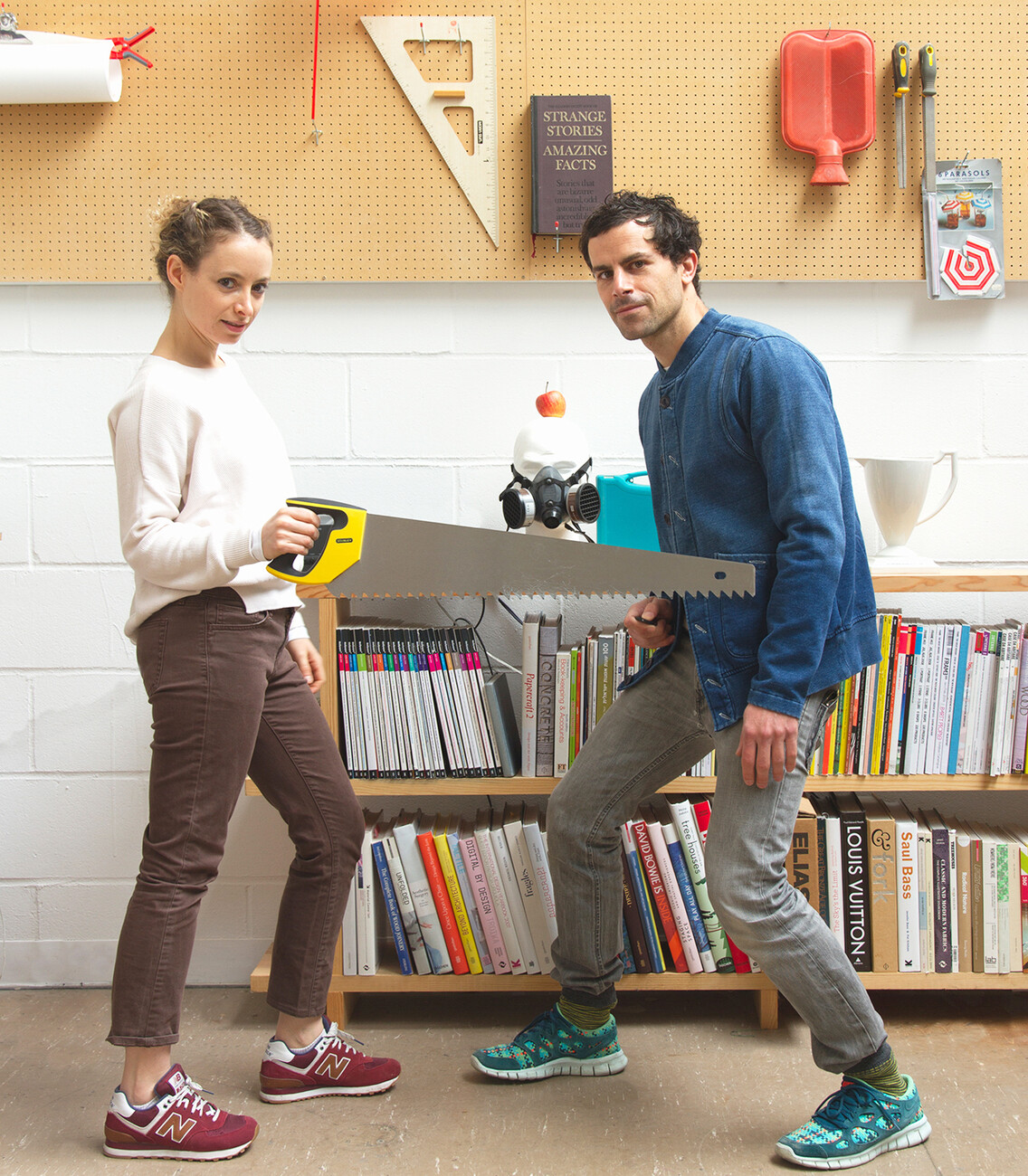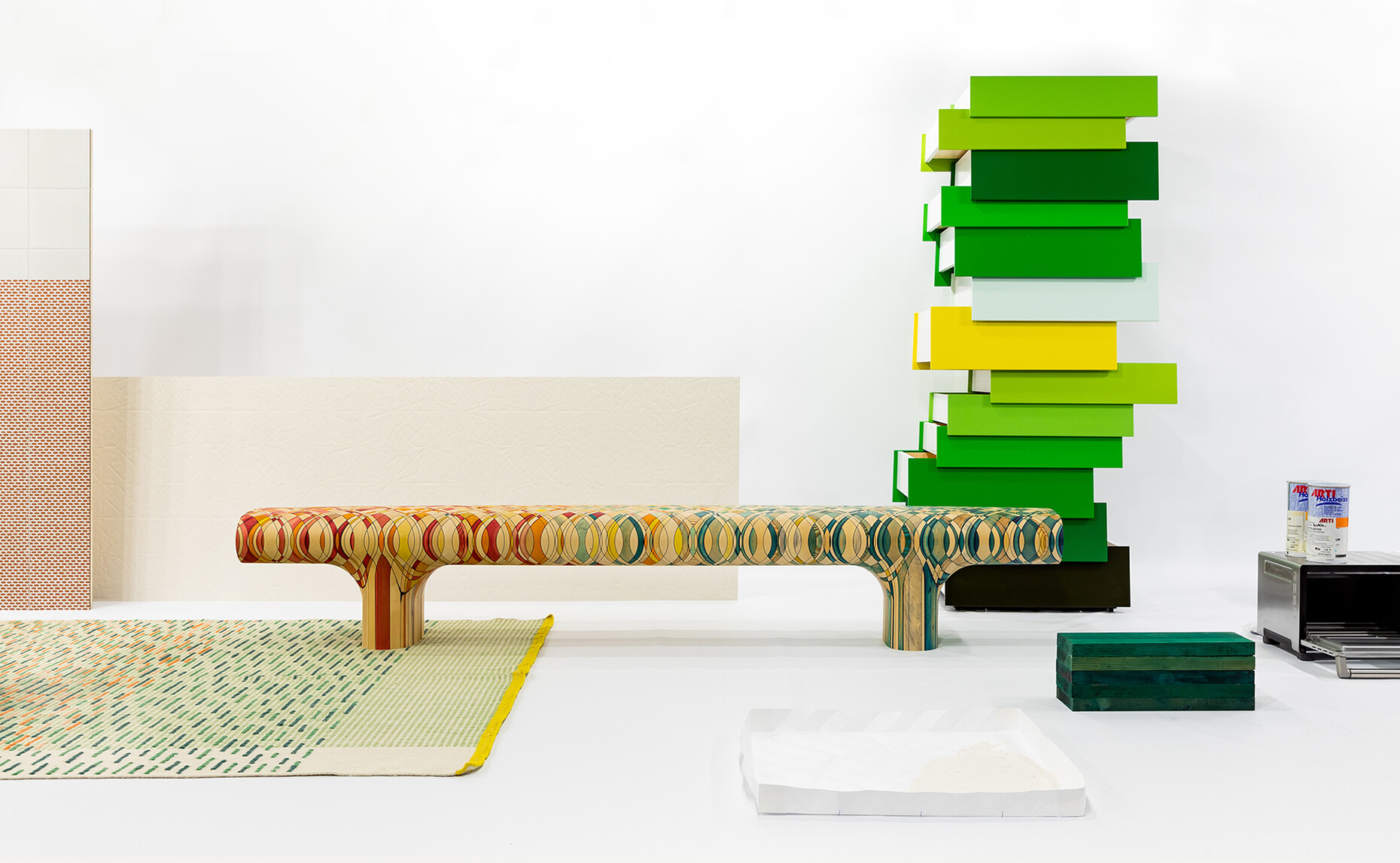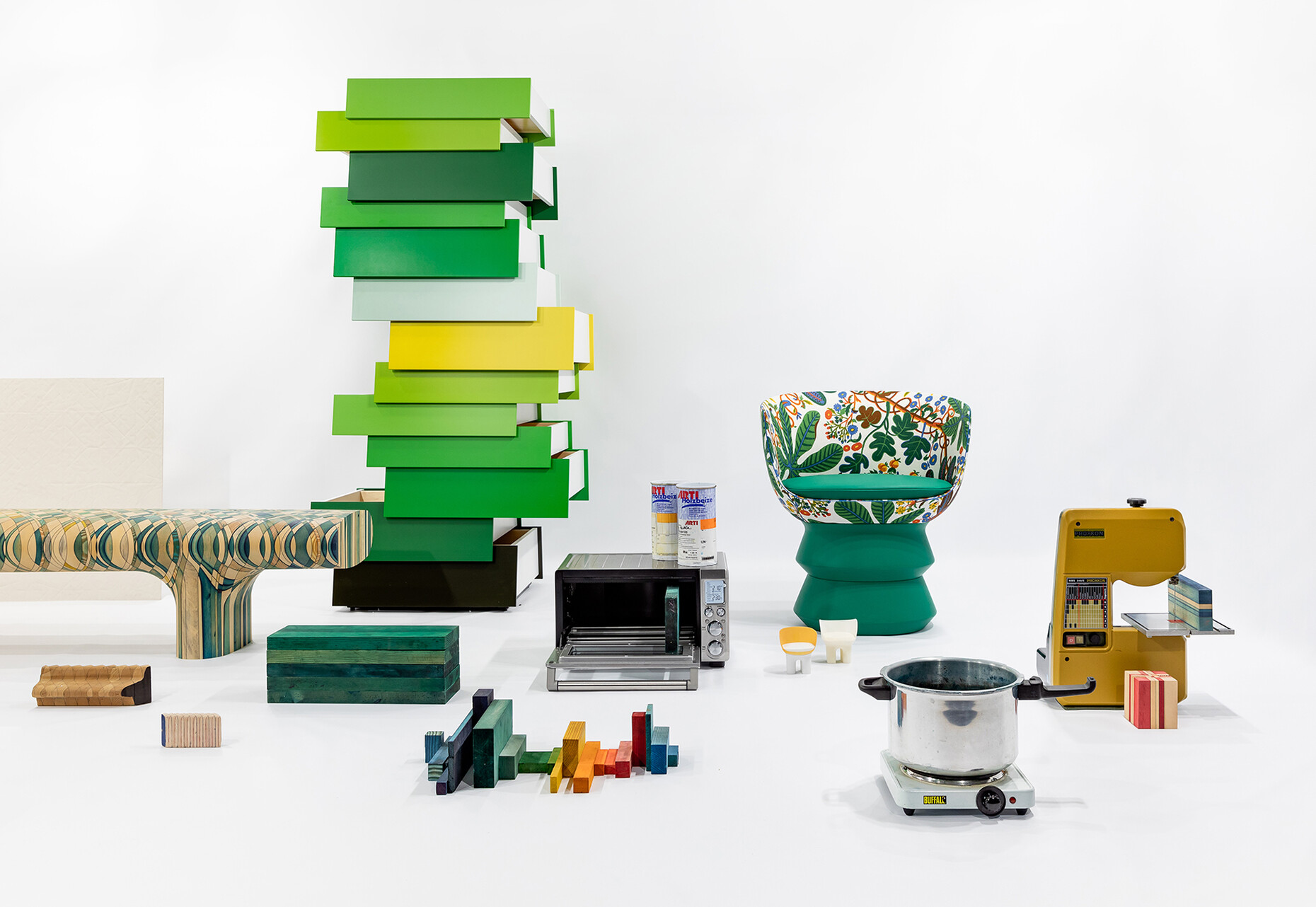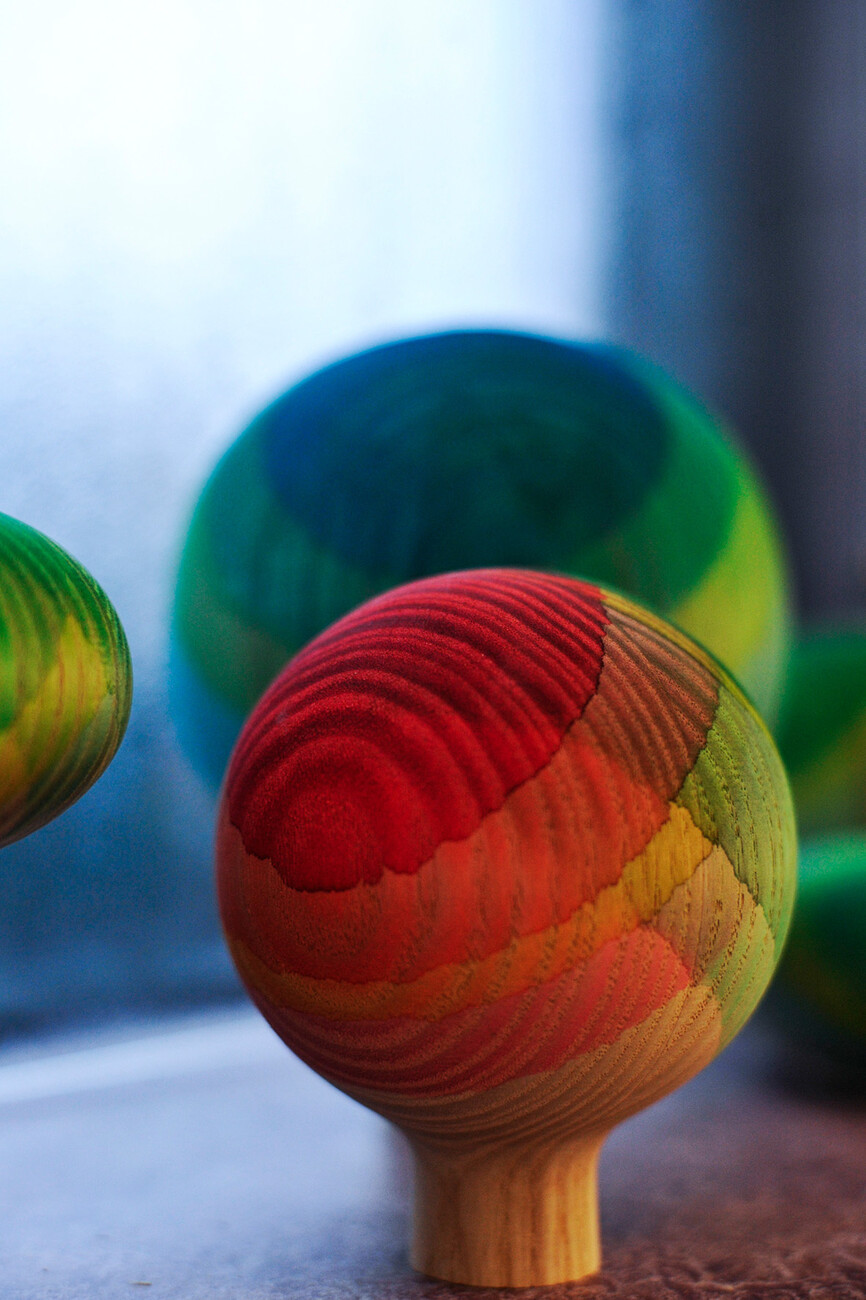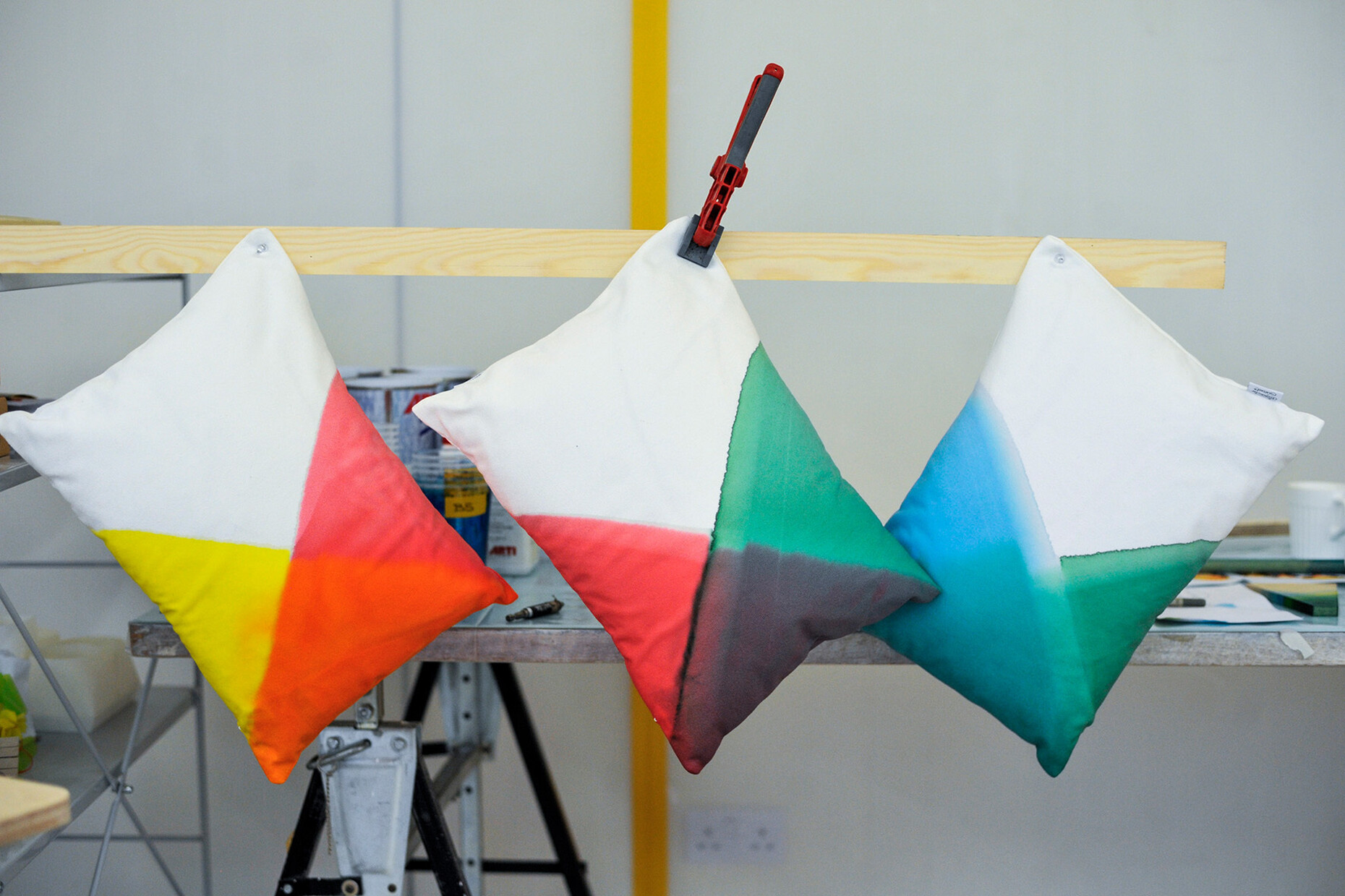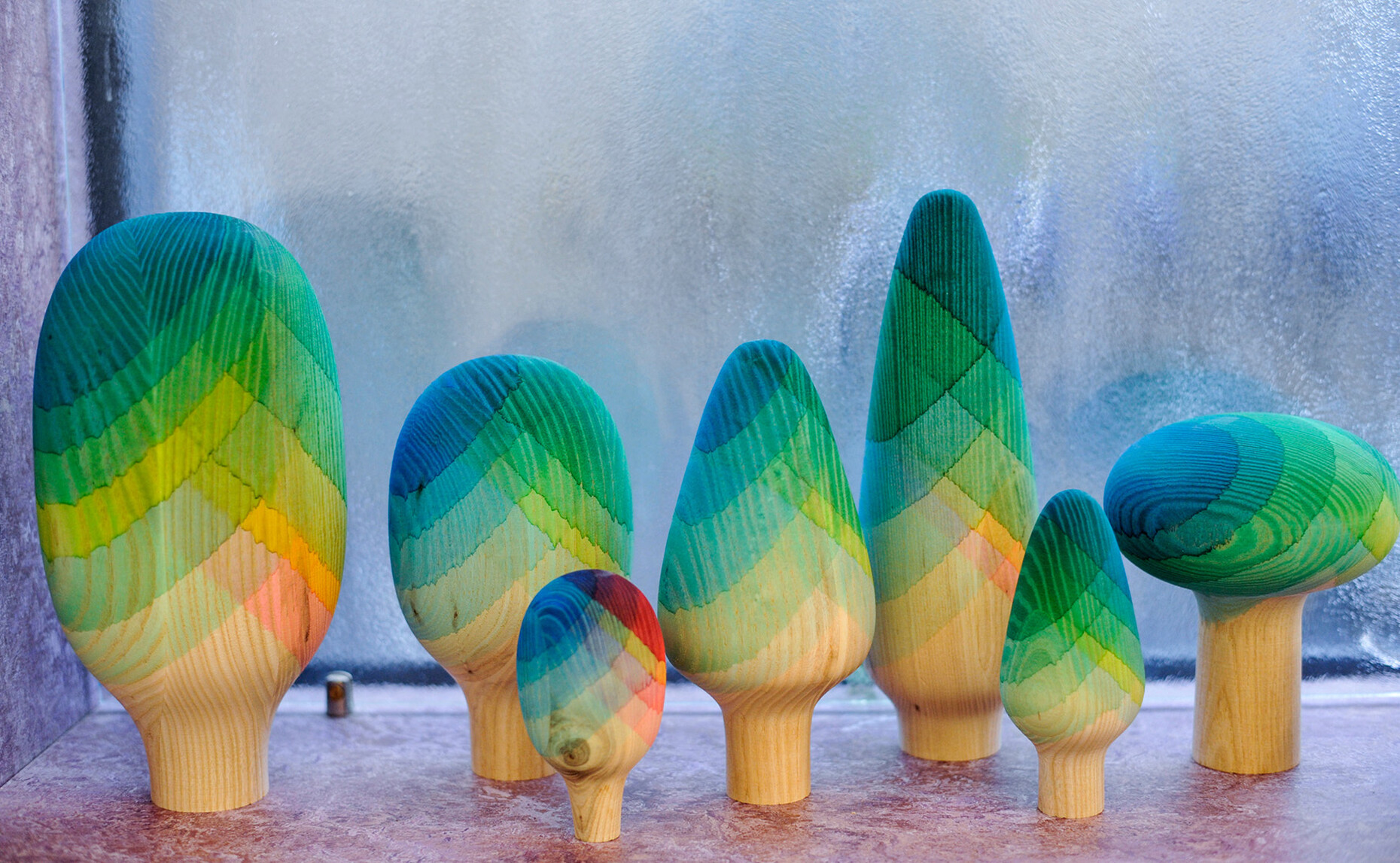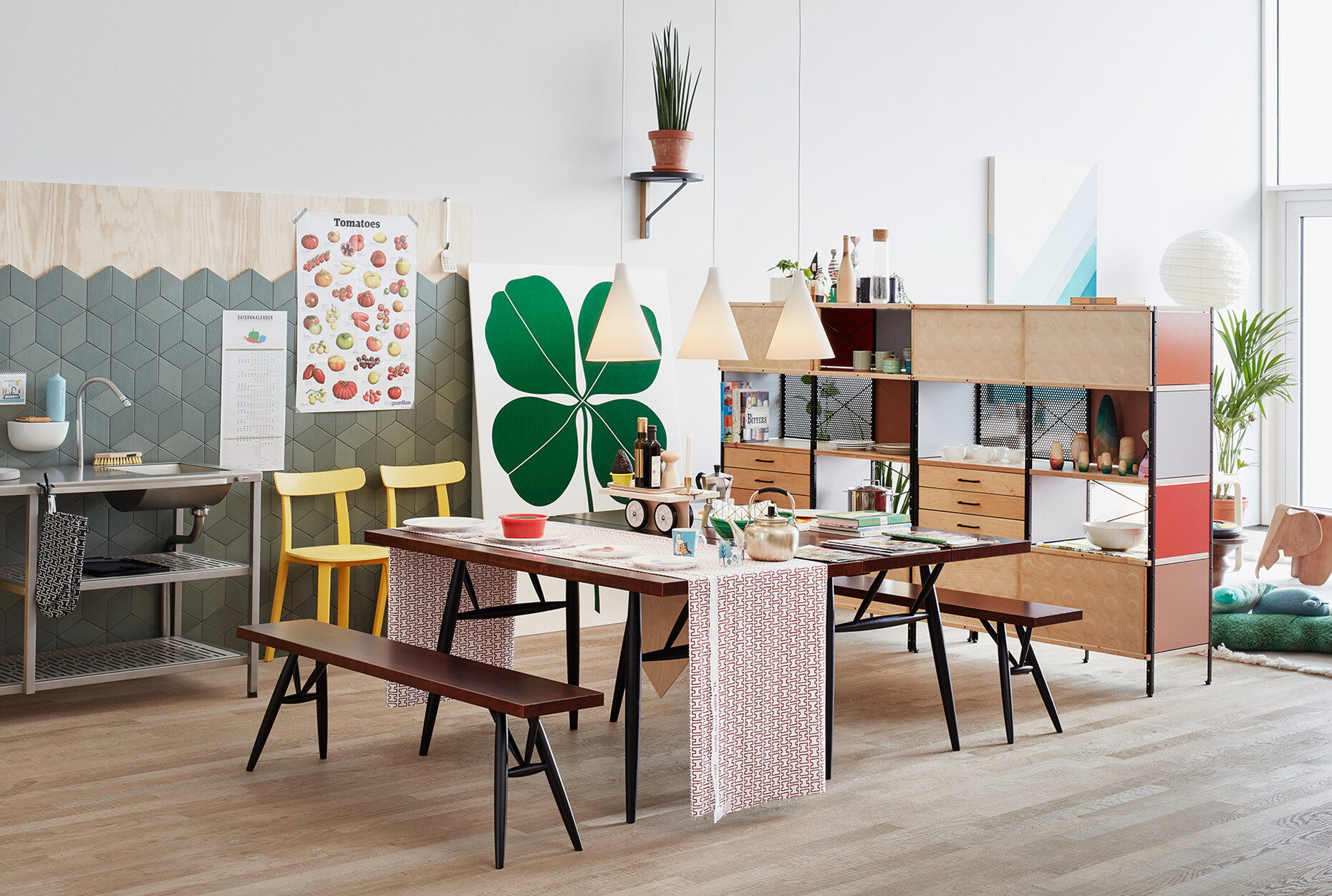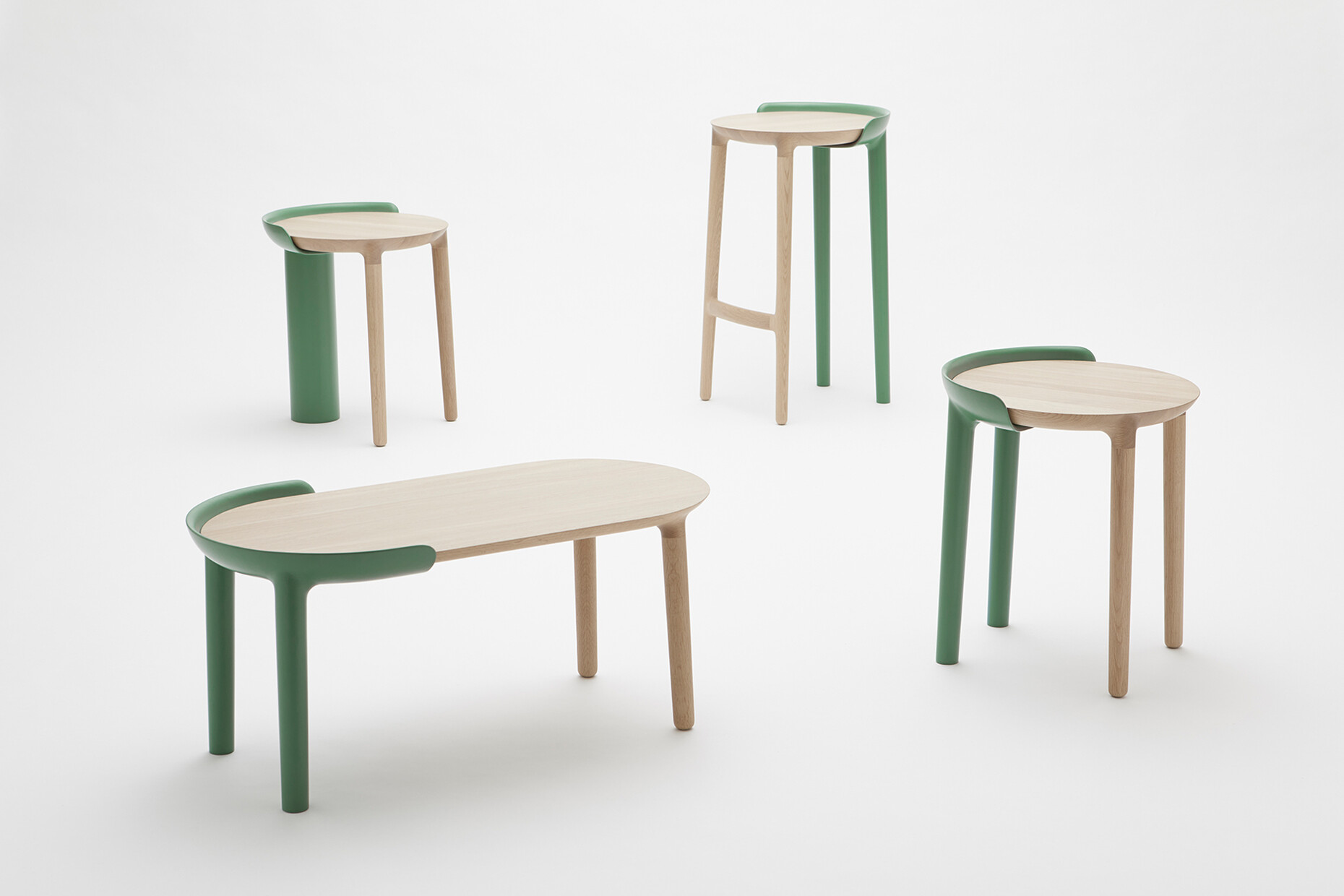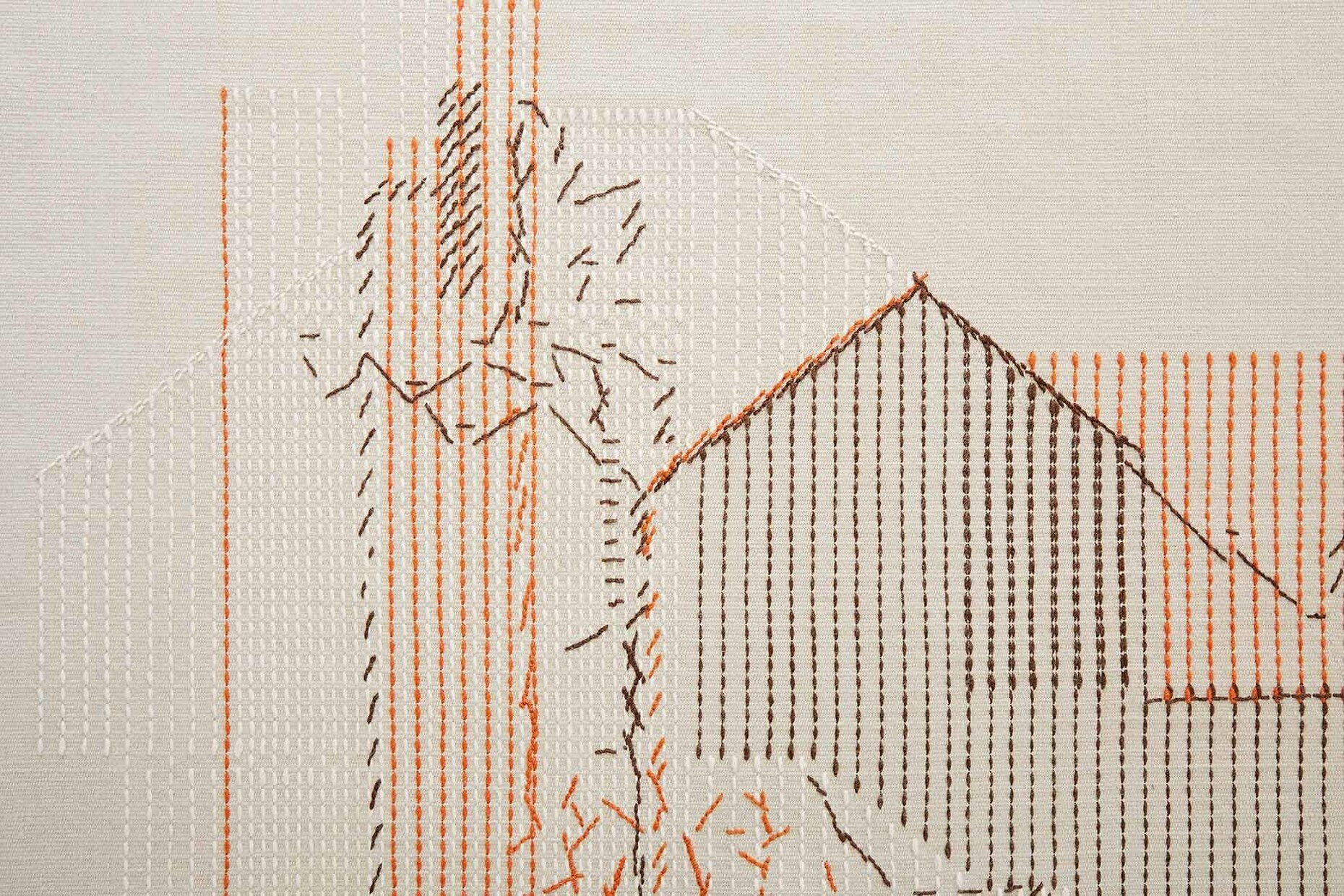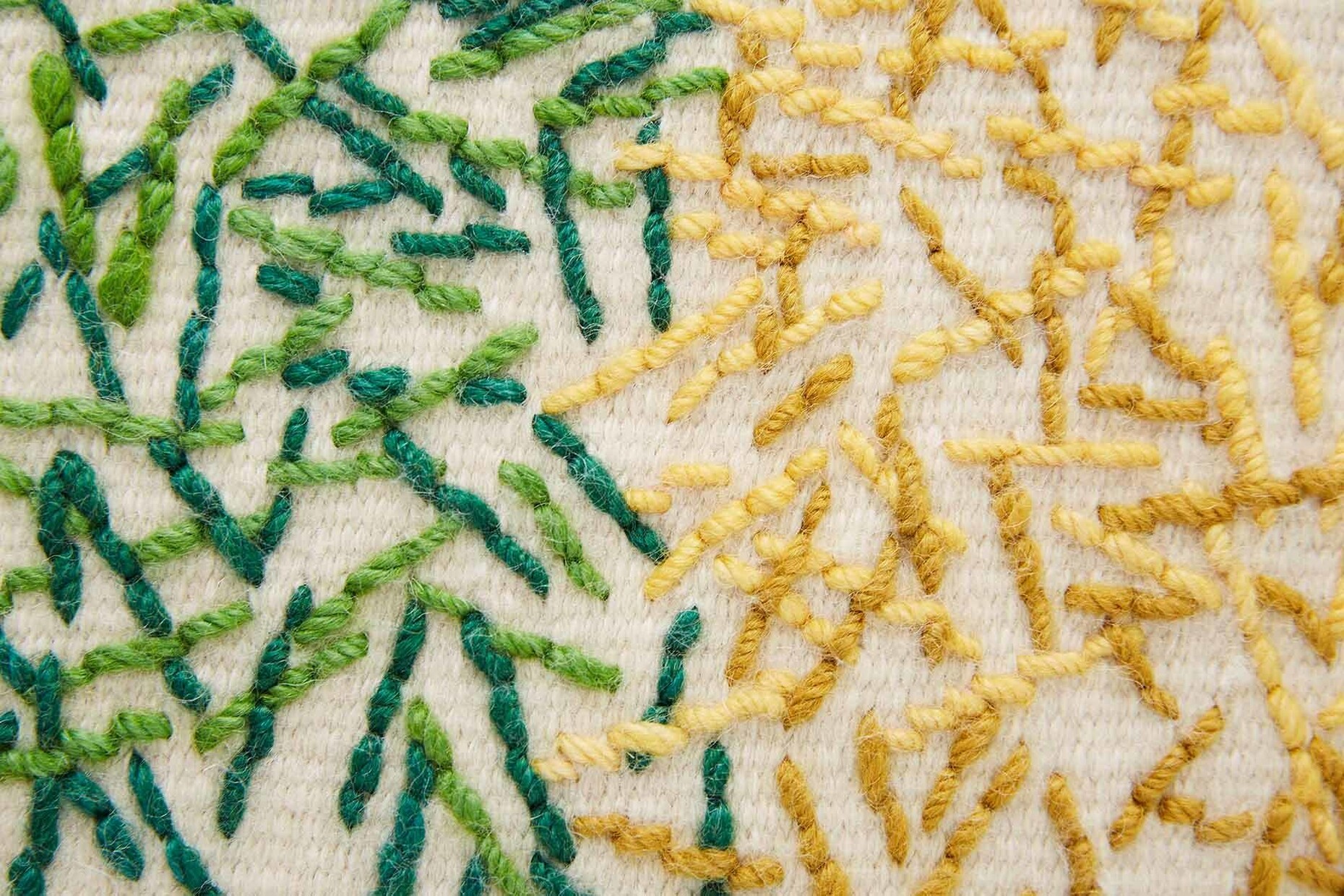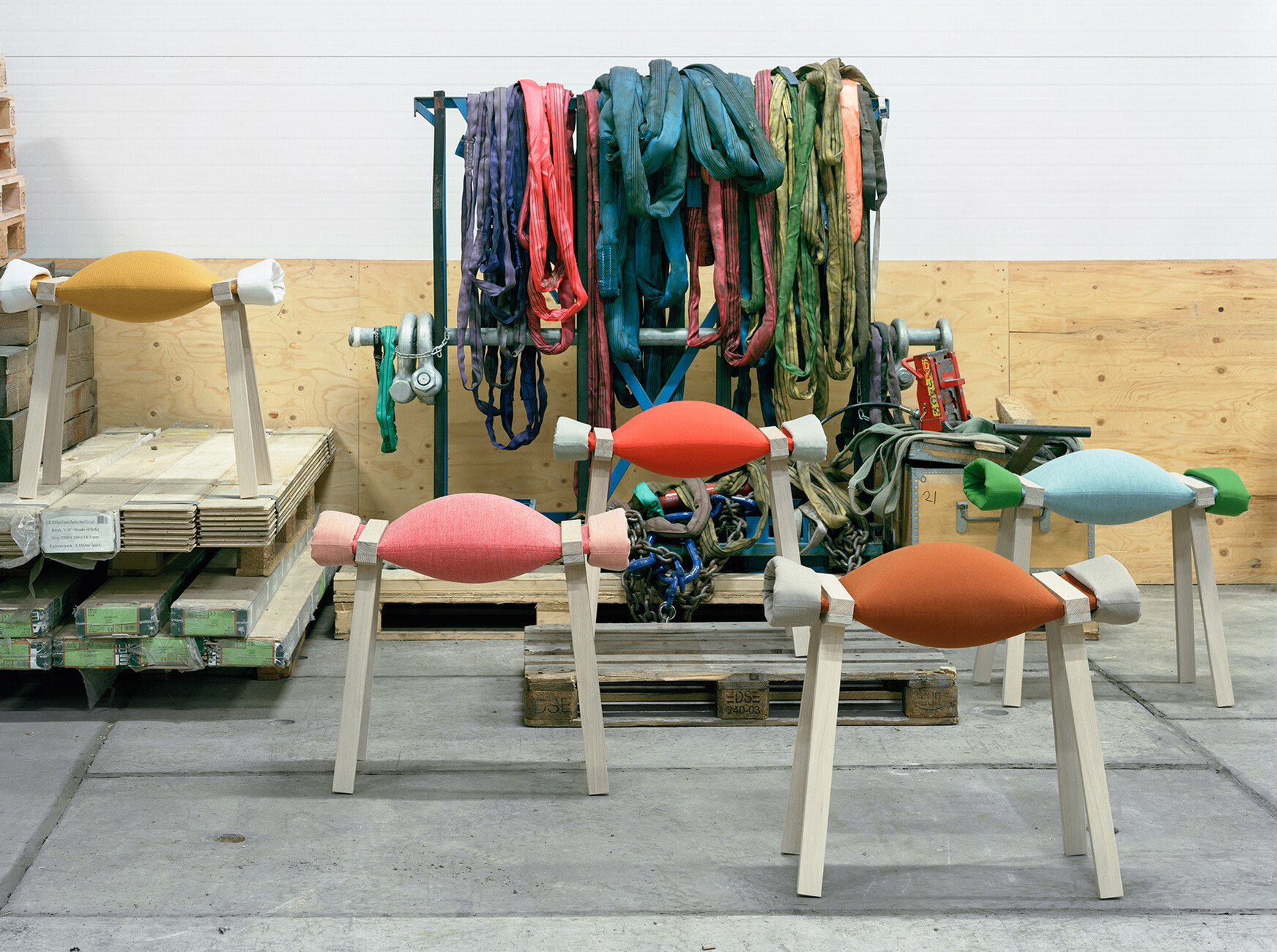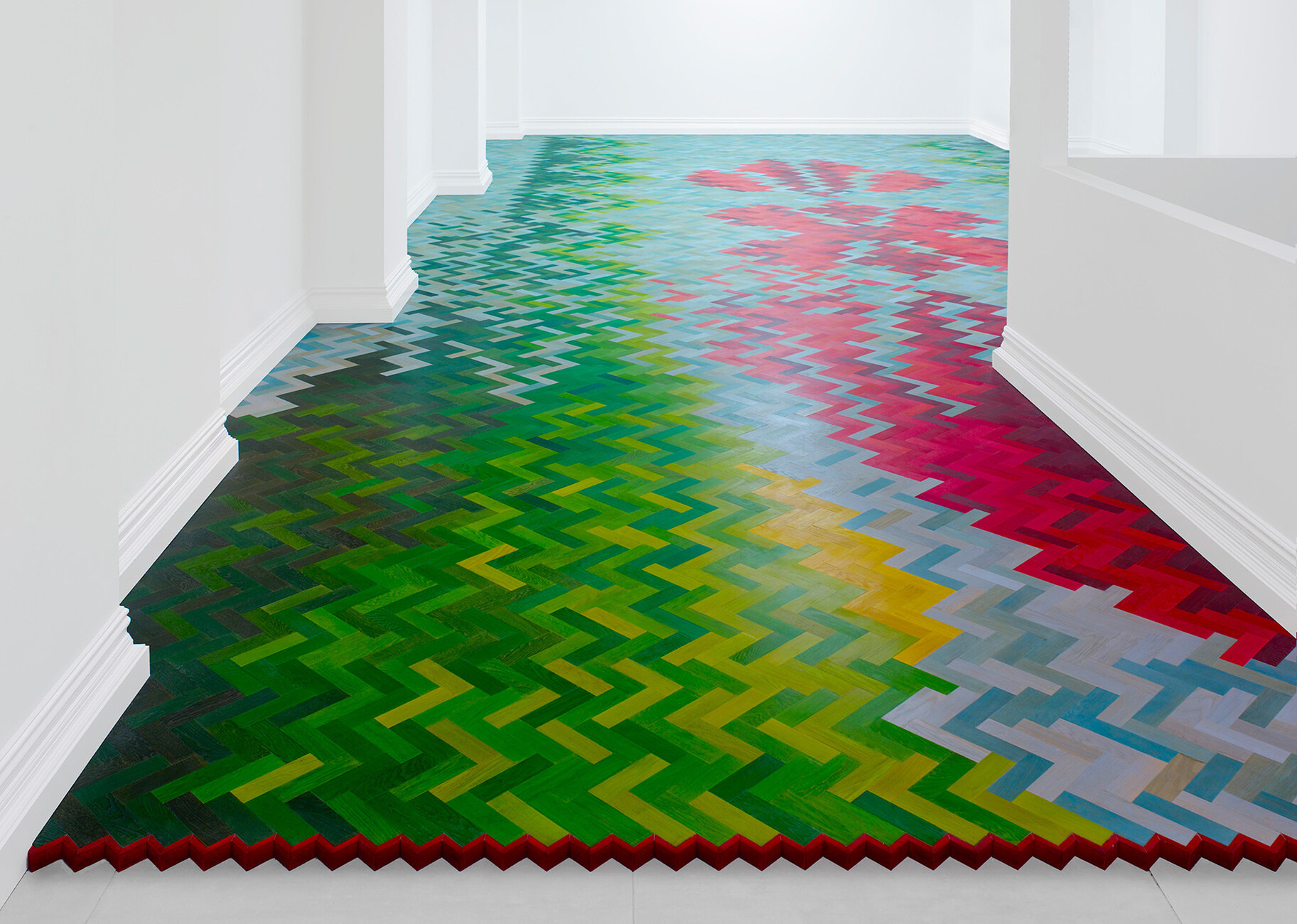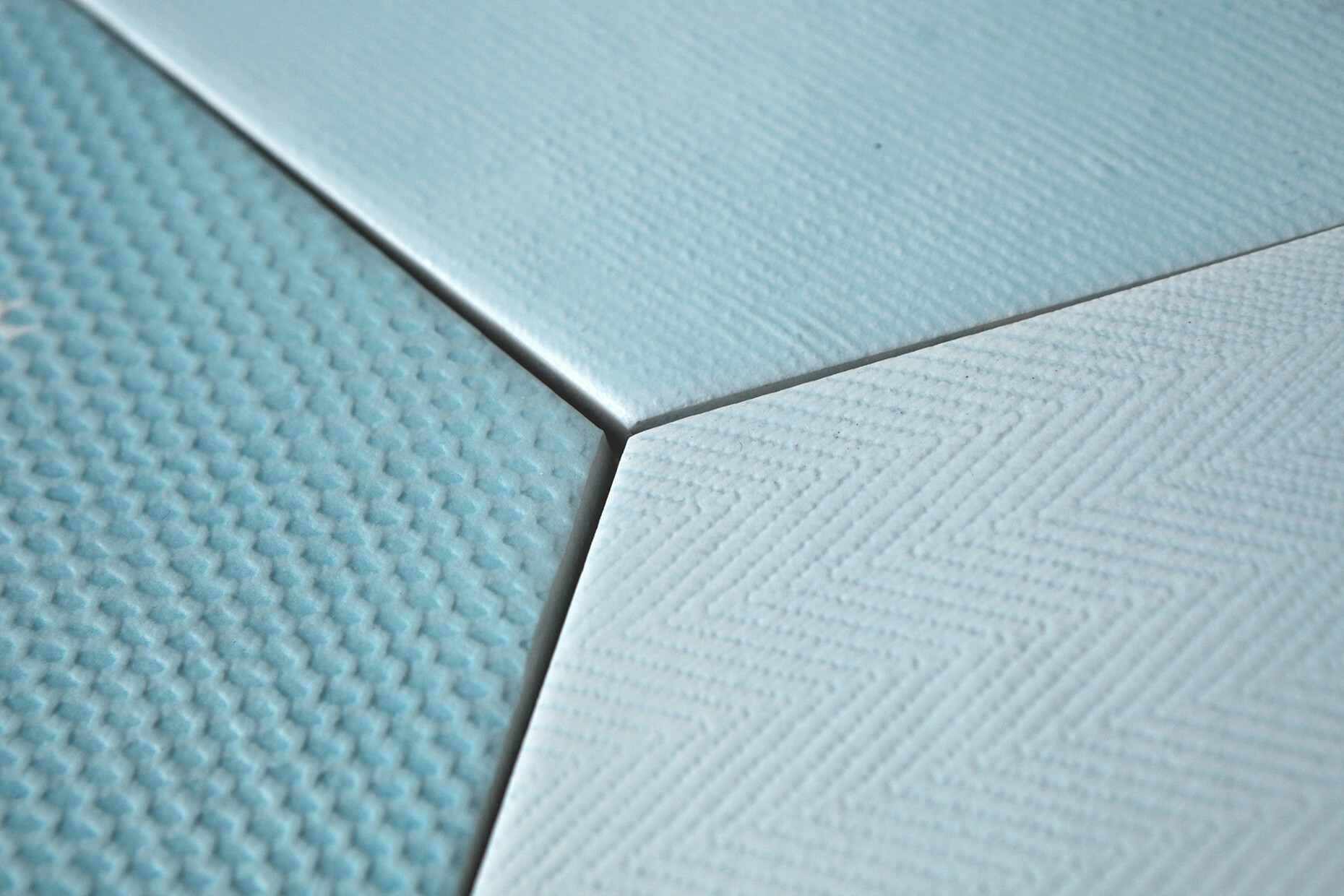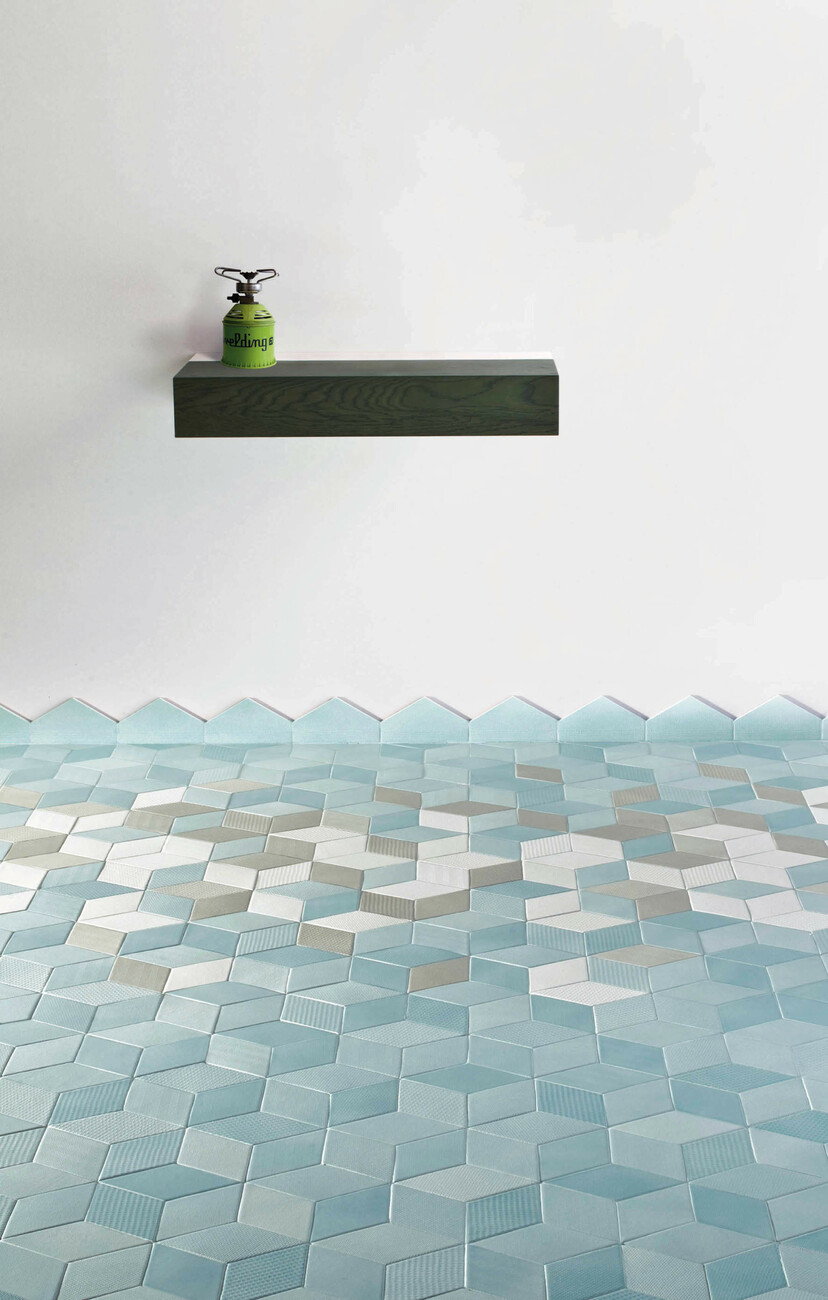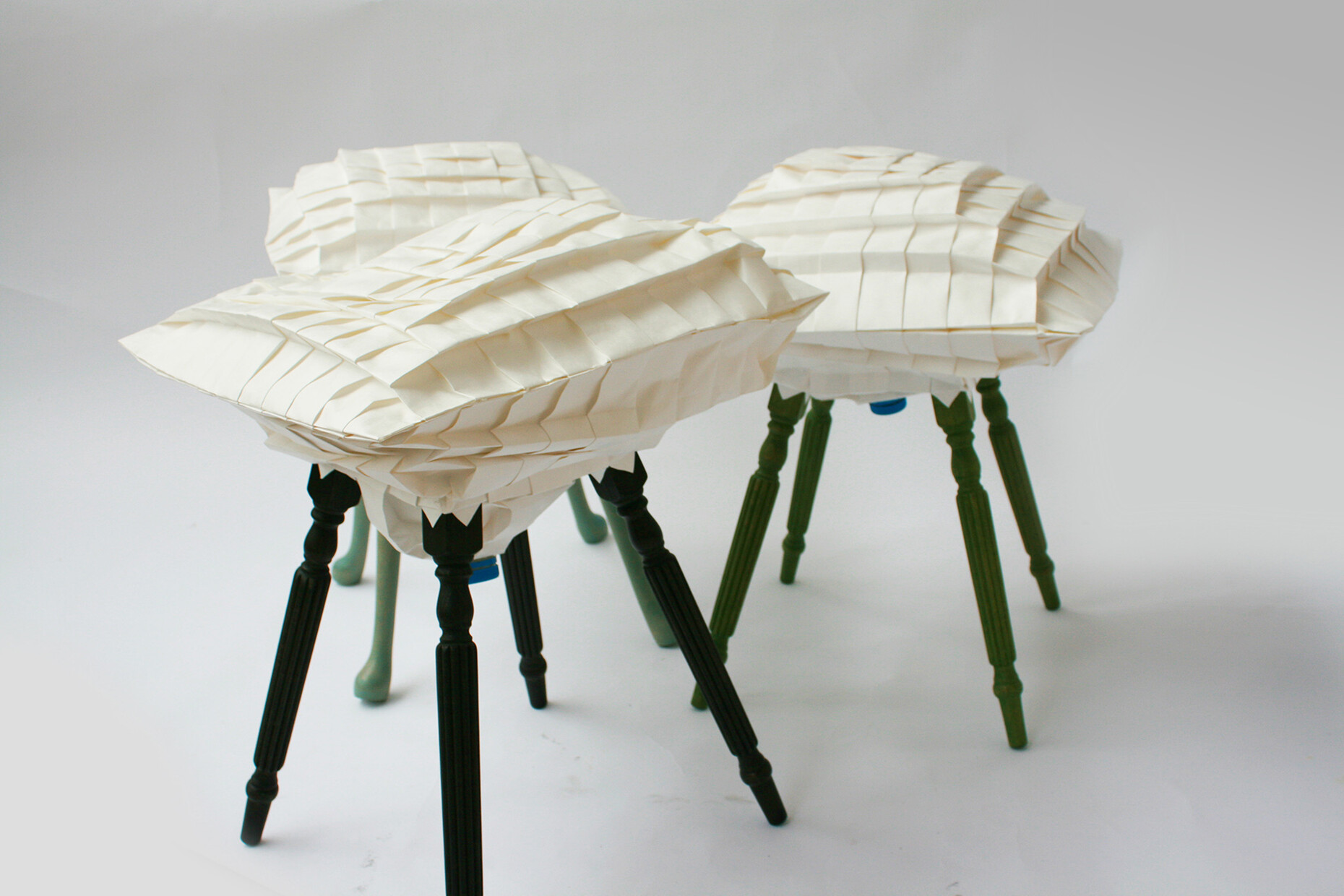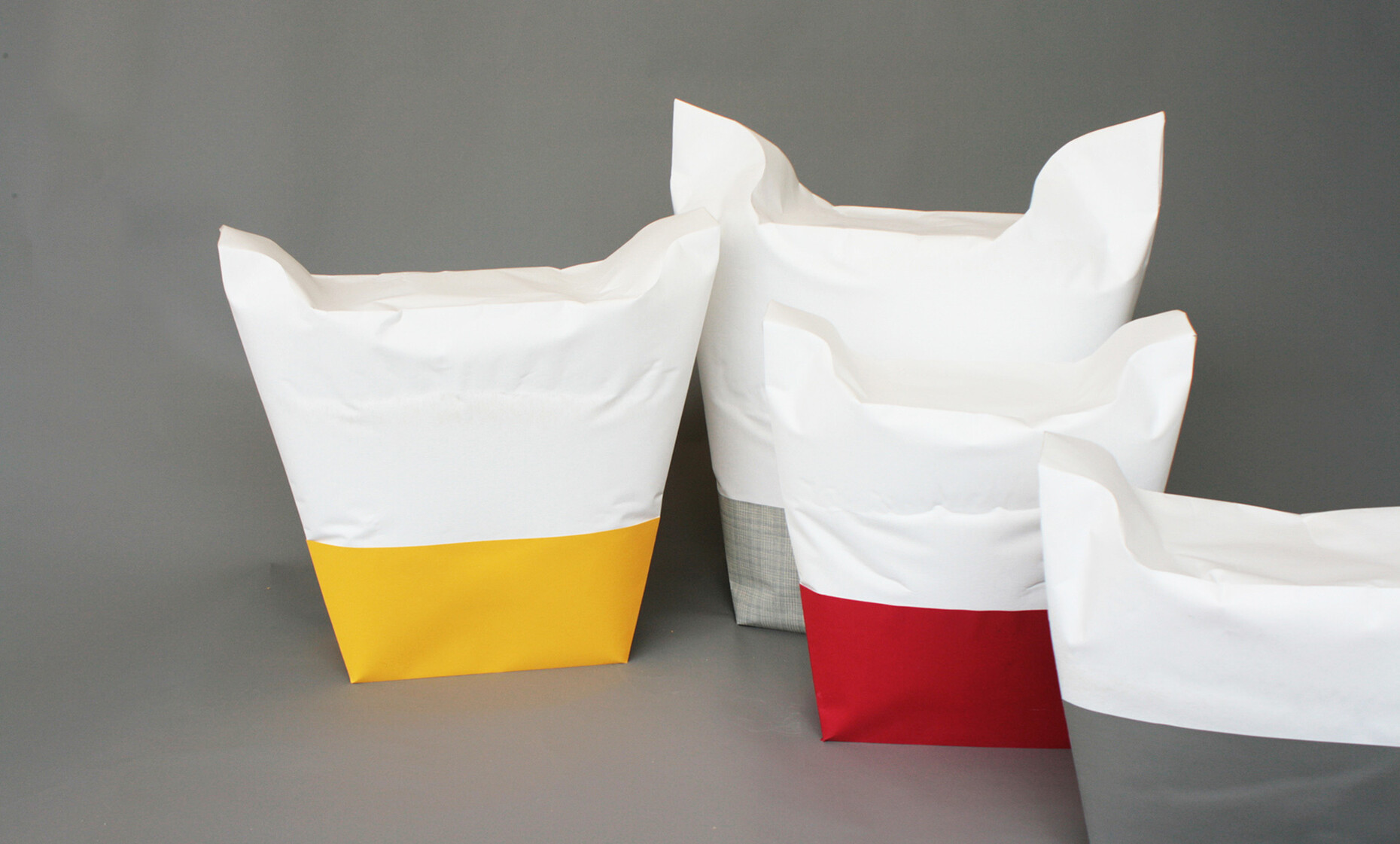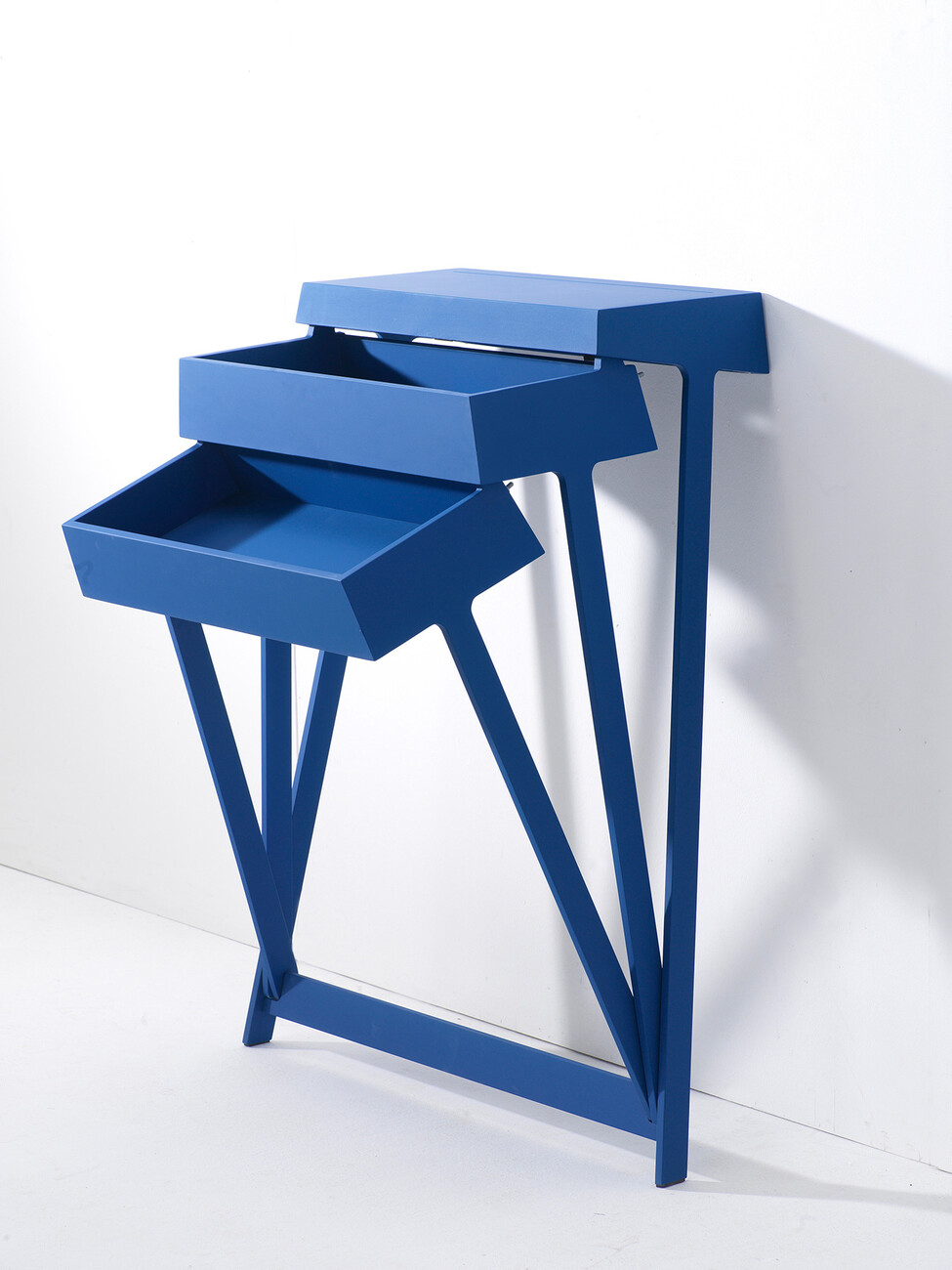PORTRAIT
Boundless creativity
“When you are training to be a product designer you often learn that you should only start on something once you have an idea. But we start with a blank page and develop playful dialogs between us and the material,” explains Yael Mer. The results are new typologies of objects, furniture and installations. The Israeli designer duo moves nimbly back and forth between the disciplines. The saying “Everyone said: That’s not possible! But then someone came along that didn’t know that and he did it” could have come from them. Take “Fine Cut” for Really by Kvadrat – a table of textile and acoustic panels made from recycled textile waste. Denim waste and cotton fibers make for a blue and white coloring that produces a painted look. Or the rhombus-shaped porcelain tiles “Tex” for Mutina, whose structure is composed from various surfaces so that the first impression you have is of a rug. By contrast, in “BackStitch” for GAN Raw Edges highlights that part of a rug that would normally remain unseen, namely the back of its embroidery work – the irregular pattern formed by the stitches on the rug’s rear side. The effect is a startling one and creates a connection between object and observer, something that is achieved in all of the works by Yael Mer and Shay Alkalay, which are both product and prototype, functional and experimental. Rather than hiding the traces of the process Raw Edges celebrates them as a part of the whole.
Boiling wood
An idea must have many facets in order to occupy the duo for a period of years. Like dyeing wood: In 2009, “Raw Edges” created parquet flooring for various Stella McCartney stores that was hand-dyed and whose dynamic patterns lent this classic product a new, fresh touch. Subsequently in their installation in the stately home Chatsworth House they explored to what extent it is possible to transfer the dye right through the timber sections. This involved developing the “Endgrain” technique whereby timber is cut across the grain and then the timber is boiled in the dye so that the color can soak through all the layers and stain it more lastingly. The advantage of this method is that the color lasts much longer than a painted version and the unique color effects would be virtually impossible to achieve by applying the dye on the surface as is the usual practice. After drying them Yael Mer and Shay Alkalay arranged the pieces in blocks and then used CNC milling to create furniture known as the Endgrain Collection. This was followed shortly afterwards by the “Herringbones” project for which individual pieces of timber were dipped in colorful baths; each time to a depth and at a 45-degree angle. When combined the various layers of color produce an elegant herringbone pattern. Then in 2019 while designing a storey in the VitraHaus in Weil/Rhein they transposed the technique of dyeing by dipping for the Vitra Herringbone Collection: Rather than dipping pieces of timber they submerged various objects in pigment baths from cushions through to vessels. The intensity and pattern of the colored herringbone pattern varies according to the material. All of them studio works that can be integrated into an industrial production without losing their unique character.
Laboratory and playground
“We see our projects as cooperations, and don’t want to just carry out a commission but rather to learn even more and to step out of our own bubble,” says Yael Mer. They designed “Steps” for the “Now Gallery” on Peninsula Square in London: it is seating conceived as a cluster of concrete units. The inspiration for the seating in different heights came from studying how people use public space when searching for a spot to rest. “Steps” is intended to encourage people to explore: Grouped in stepped fashion the higher-level seats can be reached easily by climbing over the others. “A kind of playground for adults,” sums up Yael Mer.
Keeping moving is an idea that acts as a strong driver and an ongoing study in the work by Raw Edges. And the result can be truly surprising as in “Stack" for Established & Sons, a stack of drawers with surfaces of metal, marble, Plexiglas or leather that can be pulled out in various directions and each time generate a chance shape. By contrast, the drawers in “Hole in the Floor” live up to their name by seeming to sink into the floor. The cabinet "Pivot" for Arco leans against the wall on high legs to save space when not needed. Pulling on its drawers makes it come alive: all three can be swung out at the same time. For the collection “Object Nomades” by Louis Vuitton the duo designed luminaires, wall shelving and an armchair based on a concertina design so that they can be quickly folded up. And in the luminaire “Horah” for WonderGlass, Raw Edges attached curving glass leaves to a pivoting motor. The carousel-like dynamic is inspired by the Israeli folk dance “Horah”, which is danced in a circle.
If one of their experiments misfires it ends up in a section of their London studio the duo call their “Cabinet of monsters”. Even though they might never become famed celebrities the “monsters” represent important stages in the development process. Visitors to the upcoming Salone del Mobile 2021 can also give full rein to their creativity because Raw Edges are currently working with a large dye manufacturer from South Korea on an installation in the exhibition space Ventura Centrale. It is to be called “Woz'ere” inspired by the numerous “I was here” tags left by people over the centuries in public spaces as proof of them having been at that place. The visitors to Salone are invited to succumb to their need for self-assertion and contribution and to intuitively alter the installation by Raw Edges over the course of the furniture fair. You might say this is Yael Mer and Shay Alkalay’s way of passing on their own playful curiosity and enjoyment of design. “One of our greatest motivations is having the chance to produce positive emotions in people through our creations,” says Yael Mer. Staying positive is also their motto in the current corona crisis: "We use the time at home to further develop all the ideas that we have not been able to finish so far. We'll see where this takes us," says Yael Mer. We can be curious, that is for sure.
